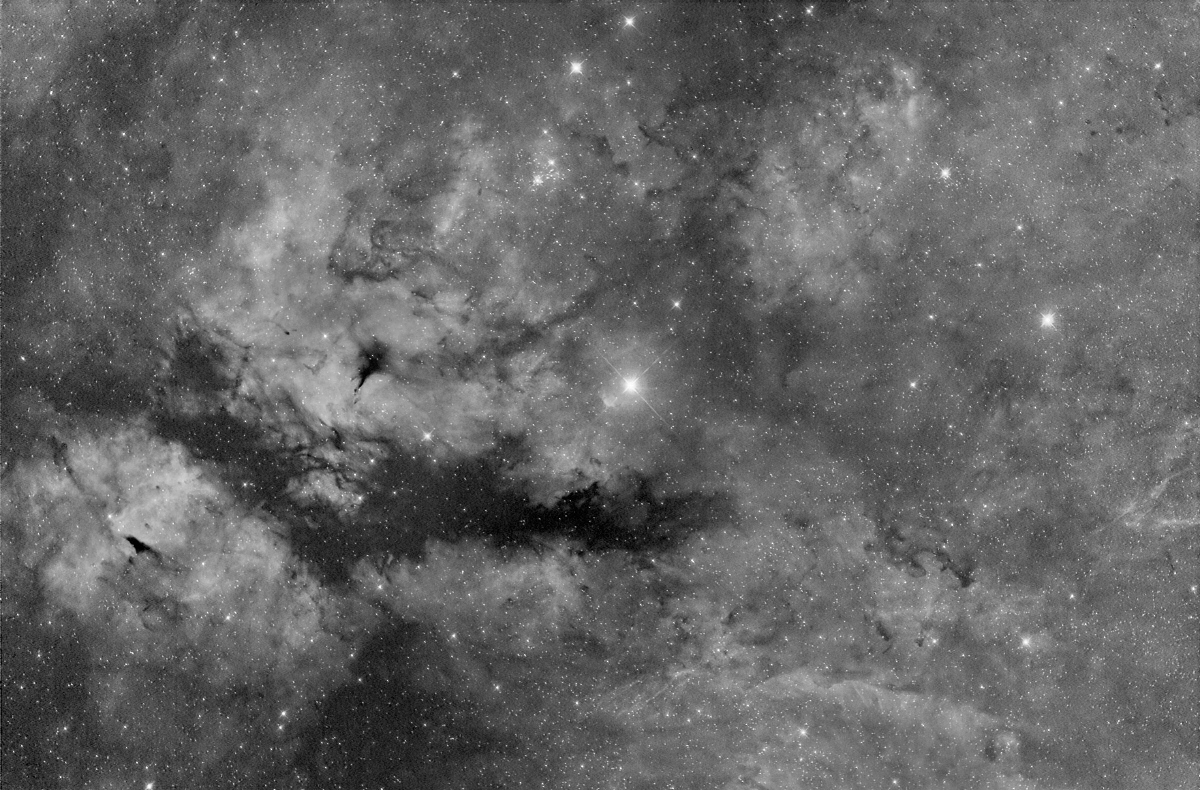
The third-brightest star of Cygnus, called γ Cygni or Sadr (the bright star near the center of the photograph), is surrounded by a huge complex of emission nebulosity. The nebula, which extends well beyond the borders of this photograph, is excited by young, hot blue-white stars and separated by dark nebulae into at least five major parts. The brightest of these parts is IC 1318, the bisected nebula region east (left) of γ Cygni which is named the Butterfly Nebula because of its two-winged appearance. The large cloud of fainter emission east of Sadr has no name but the catalog number IC 1311. The total magnitude of the nebula complex is probably fairly high, but its light is spread out enough to make small parts of it dim.
The nebulosity emits all of its light in isolated emission lines. The most prominent of those is the Hα line, which was exclusively recorded to obtain the image shown above, displayed here in gray tones. At a wavelength of 656 nm, it is located at the red end of the visual spectral range, and cannot be not very well perceived by the human eye during nighttime.
Also worth mentioning is the open star cluster NGC 6910 half a degree north (above) and slightly east of γ Cygni. This group consists of 66 stars of 10th magnitude and fainter spanning an area of 8 arcminutes, with a combined magnitude of 7.4.
 γ Cygni Nebulosity in narrow-band filters, natural colors, which this image is part of.
γ Cygni Nebulosity in narrow-band filters, natural colors, which this image is part of.
 IC 1318 - Butterfly Nebula in Hα, Newtonian CCD-image.
IC 1318 - Butterfly Nebula in Hα, Newtonian CCD-image.
Exposure Data